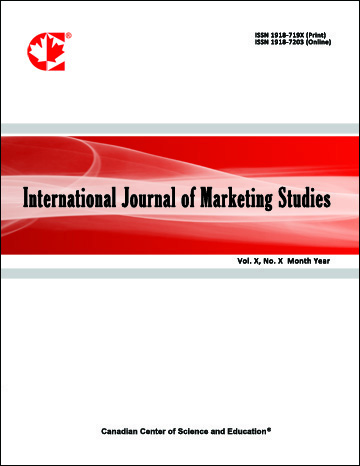Employee’s Market Orientation and Business Performance in Nigeria: Analysis of Small Business Enterprises in Lagos State
- Yunus Adeleke Dauda
- Waidi Adeniyi Akingbade
Abstract
Organization success is determined by the demand for its product or services. Many organization put in placemethods and strategies that could enabled them attract customers and improved the quality and quantity of their
product. One of the major methods in this direction is market orientation. Employees are influenced to consider
organization interest and be involved or oriented to monitor their customers’ loyalty and attitude towards their
product to enable them to be competitive, productive and profitable. But despite its advantage, most small
business enterprises (SBEs) in Lagos, the economic capital of Nigeria don’t engage in market orientation. This
paper examines different methods of market orientation and how it could be employed for improved SBEs
performance in Lagos State. Two null hypotheses were formulated to test the relationship between customer
orientation and sales growth and market orientation and SBE’s profitability. Questions were formulated based on
the hypotheses and questionnaires were distributed to top managers and investors of SBEs, out of which 95% of
the respondents returned duly completed and properly filled questionnaires. The research findings show that
many SBEs that engage in market orientation recorded substantial progress. But most other have not really
applied this method, hence their low performance and profitability. The study recommends that market
orientation should be used by SBEs for improved performance. Also, SBEs managers and owners should engage
in market orientation to enable their enterprises more profitable and survive in changing, dynamic and turbulent
business environment.
- Full Text:
 PDF
PDF
- DOI:10.5539/ijms.v2n2p134
Journal Metrics
Google-based Impact Factor (2021): 1.34
h-index (July 2022): 70
i10-index (July 2022): 373
Index
- Academic Journals Database
- CNKI Scholar
- EconBiz
- Electronic Journals Library
- Excellence in Research for Australia (ERA)
- GETIT@YALE (Yale University Library)
- Harvard Library
- IBZ Online
- Infotrieve
- JournalTOCs
- LOCKSS
- MIAR
- PKP Open Archives Harvester
- RePEc
- ResearchGate
- ROAD
- Scilit
- SHERPA/RoMEO
- Stanford Libraries
- UCR Library
Contact
- Alyssa SunEditorial Assistant
- ijms@ccsenet.org
